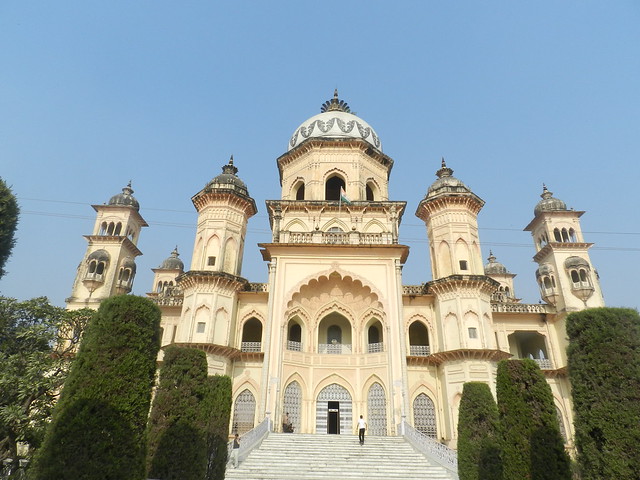By Kashif-ul-Huda, TwoCircles.net
UP close UP series: Part 8
“I have consulted this library several times. There is no better collection in India than this. I have also seen the libraries of Egypt, Syria, Turkey and Europe. And I can say that this library is richer than any one.” – Shibli Nomani about Rampur Raza Library.
While doing a series on manuscripts, old books and libraries of South Asia, veteran radio broadcaster Raza Ali Abdi found himself in Rampur. Surprisingly, the world-famous Raza Library was not known by the rickshaw-wallah that Abdi hired in Rampur. Visiting Rampur few months ago, we had no problem finding the Library but we did have trouble looking for a place to eat.

Rampur Raza Library
For a small place Rampur has a huge market. Lanes (streets?) lined with shops selling clothes, housewares, jewelries, and medicines were busy with customers. Walk past several of these lanes; ask for directions to the Hamdard Agency and you will eventually find yourself in Muhammadi Nahari Corner, one of the few places to eat in Rampur. Seating area with few benches and companion tables is not different than any other Muslim restaurants (locally known as “hotels”) of North India. There is no menu but you do have options- Nihari or Qorma. Not sure what to eat, we order both. Visually there is not much difference between those two items; pieces of meat swimming in a puddle of oil also taste the same.
But we were in Rampur to visit the Raza Library. The oldest library of India came into existence in 1774 with the personal collection of books of Nawab Faizullah Khan, founder of the Rampur State. Successive rulers of Rampur added to the collection and after the merger of Rampur to the Union of India the library is managed by a board set up under the Ministry of Culture. The Library is now housed in majestic looking Hamid Manzil.
The collection boasts of Quran written by Hazrat Ali, nephew and son-in-law of the Prophet Mohammad (peace be upon him). There are other Qurans dated eighth and ninth century. Some of the items from library’s prized collection are on exhibit in the Darbar Hall of Hamid Manzil Palace. Many more items remain in vault away from any public access.
The Library now boasts of over 750,000 books. Additionally, “there are 205 hand-written palm-leaves, 5000 miniature paintings, nearly 3000 specimens of Islamic Calligraphy,” informs Raza Library’s website. This priceless collection is protected by a unit of 37 personnel of Central Industrial Security Force (CISF).
Like any good security force, CISF unit considers Raza Library less as a library and more as a mission. Every attempt is made to make the visit to the library as uncomfortable as possible. If the guards with guns at the gate do not intimidate you then you pass through a metal detector, get your details recorded in a register with another heavy-built CISF uniformed man and then you get a slip that you have to return at the end of your visit. A visit to the Library of Congress was less painful and more welcoming. But as the 35th Annual Report of the library informs us the security is needed so that “people can not even encroach into the garden around the buildings.” I was impressed by the building, statues, art works and collection of books of Raza Library but the intimidating and unwelcoming environment made me wonder if the security is preventing people from benefitting from this valuable collection.
“The library is fully sensitive to the services of its users,” mentions the 35th Annual Report of the library covering the year 2009-10. “During the period 35 research scholars consulted 196 manuscripts, 1428 readers were issued 4683 printed books and 14,395 general readers visited the reading room for newspapers and magazines.” All this for an annual expense of 4.75 crores. The library subscribes to more newspapers and magazines than total number of readers that walk through the metal detector each year.
Slide show:
Of course, a library these days provides more service than just books to its readers. Raza Library continues the important work of acquisition and conservation of rare books and manuscripts. But what use is this if people have difficult time accessing it?
Back in Muhammadi Nahari Corner, trying to mentally digest the treasure of two centuries that was revealed to me, I notice that the waiter is a quiet young kid. He had to drop out of school and come work in Rampur. I asked him the reason to drop out of school and all he would say is – “majboori”.
“Majboori” was a strange word to hear barely minutes away from an institution that requires crores of rupees every year and benefits 35 researchers and 1428 readers.
Links:
http://kutubkhanabbc.blogspot.com/
http://razalibrary.gov.in

